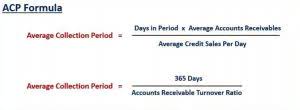
Financial equity represents the ownership interest in a company’s assets after deducting liabilities. It reflects the value that belongs to the shareholders or owners of the business. Equity can also refer to other items like brand equity or other non-financial concepts. Shareholders’ equity is, therefore, essentially the net worth of a corporation. If the company were to liquidate, shareholders’ equity is the amount of money that would theoretically be received by its shareholders.
Example of Company Equity

The amount of paid-in capital from an investor is a factor in determining his/her ownership percentage. Total equity is defined as the difference between the total assets value and the total liabilities value. From the perspective of an investor or an investment analyst, it is important to understand the concept of equity because it predominantly used to evaluate the real value of a company (net worth). In fact, the value of https://www.bookstime.com/ one’s equity investment in the company is captured by the equity value and as such the shareholders are typically concerned with the net worth of the company. The term “equity” refers to the residual business value remaining after its promoters have paid all the liabilities. In other words, in case a company decides to pay off all its debts and creditors, then whatever of the business will be left behind is the equity.
What Is the Debt-to-Equity (D/E) Ratio?
He currently researches and teaches economic sociology and the social studies of finance at the Hebrew University in Jerusalem. Upgrading to a paid membership gives you access to our extensive collection of plug-and-play Templates designed to power your performance—as well as CFI’s full course catalog and accredited Certification Programs. There is also such a thing as negative brand equity, which is when people will pay more for a generic or store-brand product than they will for a particular brand name.
Low Shareholder’s Equity: What Does It Mean?
Current assets are those that can be converted to cash within a year, such as accounts receivable and inventory. Long-term assets are those that cannot be converted to cash or consumed within a year, such as real estate properties, manufacturing plants, equipment, and intangible items like patents. The next step involves calculating the terminal value based on P/BV multiple in the final year and discounting it back to its NPV. Finally, sum the present values of dividends and the present value of the terminal value to calculate the company’s net present value per share.
- It is calculated by subtracting the value of all the liabilities from all the assets owned by the company.
- The actual share count figures—if determined using the Treasury Stock Method (TSM)—will be different, but the point intended to be illustrated here remains.
- Balance sheets are financial statements that report the company’s total assets, total liabilities, and total equity.
- Stockholders’ equity is also referred to as shareholders’ or owners’ equity.
- Average total equity is the average carrying value of equity that are recorded on the balance sheet at the different reporting dates.
The D/E Ratio for Personal Finances
The analysis needs other financial statements, such as cash flow and income statements, to determine the true state of the company’s finances. The debt-to-equity (D/E) ratio is used to evaluate a company’s financial leverage and is calculated by dividing a company’s total liabilities by its shareholder equity. It is a measure of the degree to which a company is financing its operations with debt rather than its own resources.
What Is Included in Total Equity?
Sometimes, a venture capitalist will take a seat on the board of directors for its portfolio companies, ensuring an active role in guiding the company. Venture capitalists look to hit big early on and exit investments within five to seven years. An LBO is one of the most common types of private equity financing and might occur as a company matures. At some point, the amount of accumulated retained earnings can exceed the amount of equity capital contributed by stockholders. Retained earnings are usually the largest component of stockholders’ equity for companies operating for many years.
- Think of retained earnings as savings, since it represents the total profits that have been saved and put aside (or «retained») for future use.
- Profits made by a company that are not paid out as dividends to stockholders (shareholders) but rather are set aside for reinvestment in the company are known as retained earnings (RE).
- Investors can compare a company’s D/E ratio with the average for its industry and those of competitors to gain a sense of a company’s reliance on debt.
- In contrast, a company’s ability to service long-term debt will depend on its long-term business prospects, which are less certain.
- In fact, debt can enable the company to grow and generate additional income.
- If you want to calculate the value of a company’s equity, you can find the information you need from its balance sheet.
What are the Components of Shareholders Equity?
- Shareholders’ equity represents the net worth of a company, which is the dollar amount that would be returned to shareholders if a company’s total assets were liquidated, and all of its debts were repaid.
- The amount of equity one has in their residence represents how much of the home they own outright by subtracting from the mortgage debt owed.
- Here, we’ll assume $25,000 in new equity was raised from issuing 1,000 shares at $25.00 per share, but at a par value of $1.00.
- Total assets are the total of current assets, such as marketable securities and prepayments, and long-term assets, such as machinery and fixtures.
- Examining the return on equity of a company over several years shows the trend in earnings growth of a company.
- The reason for this is that the P/E ratio is not capital structure neutral and is affected by non-cash and non-recurring charges, and different tax rates.
Equity ratios with higher value generally indicate that a company’s effectively funded its asset requirements with a minimal amount of debt. Current liabilities are debts that are due for repayment within one year, such as accounts payable and taxes payable. Long-term liabilities are obligations that are due for repayment in periods beyond one year, including bonds payable, leases, and pension obligations. The dilutive effect of these securities can be calculated using the treasury stock method.
The number of outstanding shares is not needed to calculate total equity value. Total Equity is the value that would be returned to a company’s shareholders if all the assets were liquidated and all the company’s debts were paid off. It is calculated by subtracting total liabilities from total assets of the company. Basic equity value is simply calculated by multiplying a company’s share price by the number of basic shares outstanding. A company’s basic shares outstanding can be found on the first page of its 10K report.

The equity value is the total market value of a company’s common equity from the perspective of its shareholders, as of the latest closing date of the markets. The Equity Value is the total value of a company’s stock issuances attributable to only common shareholders, as of the latest market close. In the total equity formula final section of our modeling exercise, we’ll determine our company’s shareholders equity balance for fiscal years ending in 2021 and 2022. From the beginning balance, we’ll add the net income of $40,000 for the current period, and then subtract the $2,500 in dividends distributed to common shareholders.
